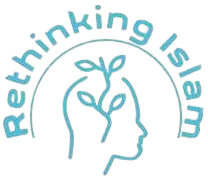Most discussions about the Israel Middle East conflict often overlook key perspectives that are significant to the Islamic community. As you probe into this complex situation, understanding the conflict as it stands in 2025 through an Islamic lens can provide valuable insights.
Firstly, it is imperative to recognize the historical significance of Jerusalem in Islam. The city is home to the Al-Aqsa Mosque, which is regarded as the third holiest site in Islam after Mecca and Medina. For you, this may highlight how deeply intertwined religious sentiments are with the political struggles in the region. Since 1948, the city has been a focal point of tension, and its status continues to play a key role in peace negotiations.
In 2025, the two-state solution remains a prevalent topic. You should note that many in the Islamic world support the establishment of a Palestinian state alongside Israel, advocating for self-determination and the right to return for Palestinian refugees. The 2019 Oslo Accords revival in talks shows that these discussions continue to evolve, influencing the peace discourse significantly.
Another important aspect is the narrative surrounding human rights. You might find various Islamic organizations that actively campaign against what they see as violations of Palestinian rights. These groups often emphasize the need for justice, equity, and adherence to international law in their advocacy. This perspective encourages you to examine the humanitarian implications of the conflict more closely.
As the geopolitical landscape shifts, the role of neighboring countries has also changed. Nations like Jordan and Egypt have been vocal about their support for Palestinian aspirations. This regional involvement is critical for your understanding of the dynamics that shape the conflict, as these countries hold significant influence in peace negotiations and provide support to Palestinian governance.
You should also consider the impact of international powers. In 2025, countries such as the United States and Iran remain pivotal players. While the U.S. continues to back Israel politically and militarily, Iran supports groups like Hamas and Hezbollah, which complicates peace efforts. Your awareness of how these alliances are formed can provide clarity on the ever-changing nature of the conflict.
Finally, grassroots movements among Islamic communities highlight the strong desire for peace and coexistence. You may find organizations striving for dialogue between Israelis and Palestinians, fostering understanding and cooperation. This approach emphasizes that, within the larger struggle, there are voices aiming for harmony and collective progress.
In the end, as you explore the Israel Middle East conflict through an Islamic lens in 2025, consider the intertwined themes of religion, rights, regional influence, and international politics. Each of these elements shapes the narrative and evolving landscape of this long-standing dispute.

